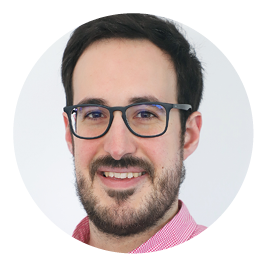Etienne Smith
AP2E France
- Conference: Process Conference
- Presentation: Combination of OFCEAS Spectroscopy and Low Pressure sampling, for ppb measurement of trace gases in hydrocarbons (H2S,NH3,H2O, etc.)
- Presentation Time: Wednesday 10:45


Etienne SMITH
International sales engineer Europe at AP2E
After graduating with an engineering degree from Lasalle Beauvais Institute and a MBA from Paris school of management, Etienne has been working for the international business development of gas analyser manufacturers since 2012. He joined AP2E in 2016, to manage the European networks of AP2E sales partners. AP2E is a French manufacturer of gas analysers based on OFCEAS and Low Pressure Sampling technologies, with analytical solutions for continuous process optimization, quality control, emission and ambient air monitoring. AP2E is part of DURAG GROUP since 2018.
OFCEAS or Optical Feedback Cavity Enhanced Absorption Spectroscopy, is a gas analysis technology developed by the University Joseph Fourier. OFCEAS essentially differs from the older technology enhanced-cavity TDLAS by its feedback principle: a part of the emitted radiation is returned from the chamber to the laser, enabling the tuning of the laser and the cavity, creating a resonance phenomenon. The measuring cavity in which the sample is analyzed is equipped with high reflectivity mirrors (>99,99%), providing an optical path up to 50 km. The consequence of this phenomenon is the identification of intense absorption peaks with narrow spectral width. The system presents very high measurement stability: there is no zero and no span drift and no need for new calibrations. LPS or Low Pressure Sampling, is a patented sampling technique. The pressure is maintained under 100mbar absolute from the sampling point to the exhaust of the analyzer. Given that the transfer time is reduced, the dew point is decreased below ambient temperature, the interferences between absorption picks is minimized. The combination of OFCEAS and LPS was implemented in gas analyzers. At the beginning the goal was to use it for research purposes by the University Joseph Fourier, to measure very low concentration of gases in ambient air. But quickly the technology attracted the interest of the industry, and the technology is now used worldwide in process applications. For trace gas analysis, OFCEAS and LPS provide many advantages. OFCEAS allows very low levels of detection, and measurement range can be from parts per billion to percentage. It can measure several gas species considered as poisons in the petrochemical industry (H2S, H2O, NH3, C2H2) even at very low concentrations. The technology is also self-referenced, and not deviating system, so there is no need of regular calibration. A direct measurement of all gas species is made every 100msec, without calculation treatment. LPS below 100mbar absolute, has an impact on the absorption spectrums. The lower the pressure is the thinner are the absorption picks, which allows discrimination of gas species in a same spectrum. The cross-interferences becomes very limited, and trace measurement becomes possible even with high concentration of hydrocarbons, CO, CO2, and H2O. Finally, the low pressure uses limited amount of sampled gas, less than 20 l/h for most process applications. A low flow of gas sampled also means a low amount of particles sampled. The accumulation of dust in the filters of the analyzer is reduced by ten, and the cost of spare parts is therefor reduced. Finally, the low pressure in the sampling line and the small measurement cell are reducing the response time of the system down to few seconds.